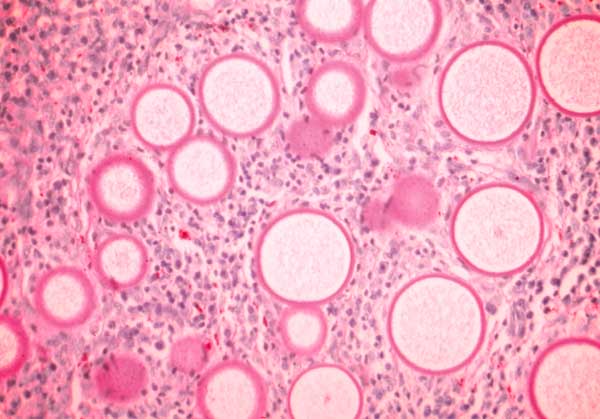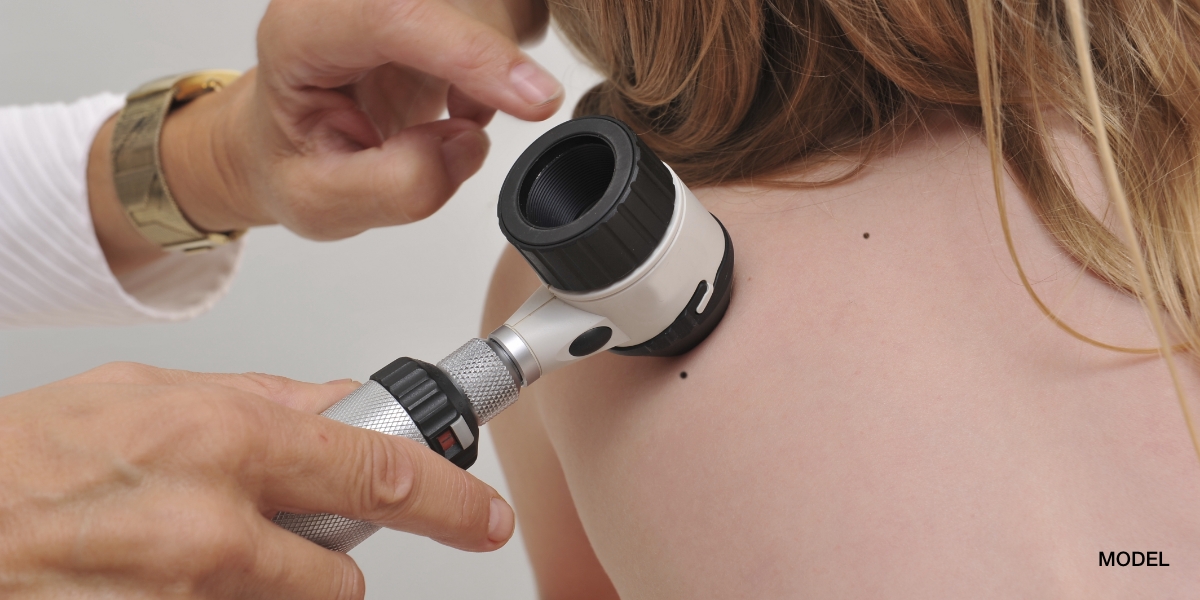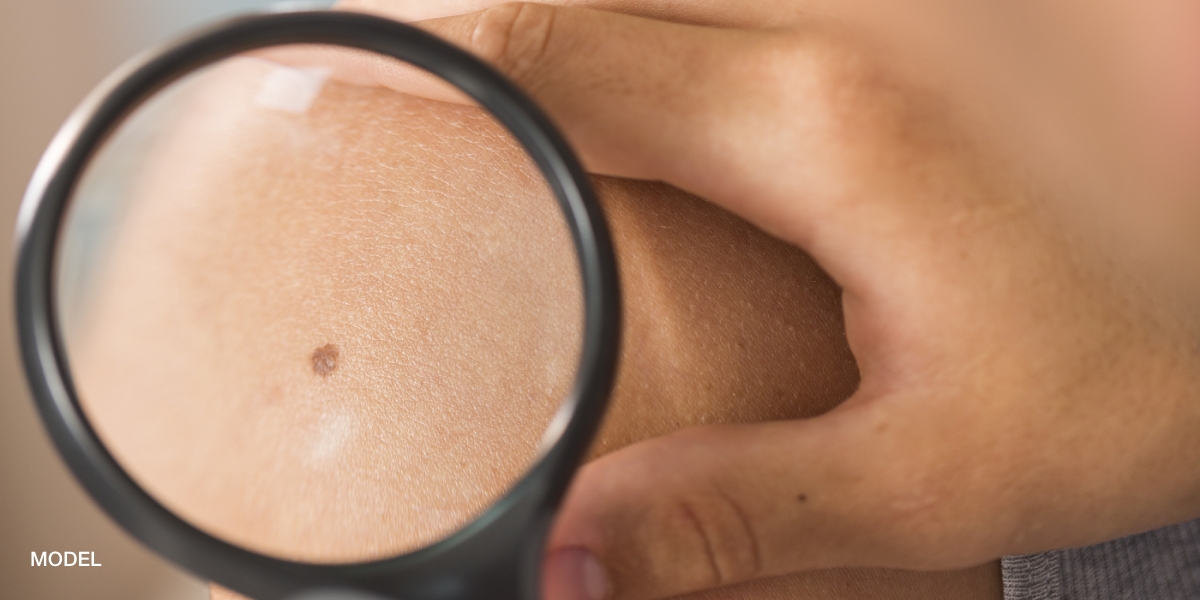Rhinosporidiosis is a “deep fungus” infection caused by the organism Rhinosporidium seeberiand is rarely encountered in my The Woodlands dermatology and Conroe dermatology offices. Recently, there has been research indicating that Rhinosporidiosis is actually an an aquatic parasite and not a true fungus. Rhinosporidiosis is endemic to Sri Lanka and India but can also be found in South America and causes infections in fish and amphibians. Most patients are infected through traumatic inoculation after exposure to stagnant water. No immune deficiencies are usually found in infected patients. The typical skin lesions are polyps that arise from the nasal mucosa and the eye. The nasopharynx is affected in 70% of cases and the palpebral conjunctiva in 20% of cases. The polyps are very friable and bleed easily due to their extensive vascular network. The polyps are usually limited to the mucosal membranes. Diagnosis is through skin biopsy and observing giant spherules/sporangia in the dermis. Antifungals are ineffective so surgical excision is the only method of treatment.
October 27, 2010




